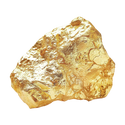Capitoline-Wolf Chalcedony Tassel Pendant
Sold
Details
Authentic Roman Imperial coin minted circa 330-335 A.D. set in 18K yellow gold with chalcedony and gold beaded tassel.
Handmade in Rome.
History
Measurements
Delivery
Care




Capitoline Wolf
(NUMMUS)
(NUMMUS)
A commemorative coin featuring the iconic she-wolf, affectionately nurturing the infant twins Romulus and Remus. This striking depiction honours the legendary foundation of Rome, a timeless tale intertwined with the identity of Constantine the Great as he sought to solidify his stature as the supreme ruler of the Empire.

Gold
(18K)
(18K)
It is a dense, soft, malleable, and ductile metal. Gold is highly valued for its beauty, rarity, and resistance to corrosion. It does not tarnish or corrode over time, making it a perfect choice for jewellery.

Blue Chalcedony
(QUARTZ)
(QUARTZ)
Blue Chalcedony captivates with its stunning shades of blue, whether translucent or opaque, making it a symbol of stability and calm.
Our items are handmade in our atelier in Rome.
Delivery is estimated at 4-6 weeks from when the order is placed with the atelier, but we always endeavour to deliver sooner. Our team will be in touch to keep your updated at every stage of production.
Alternatively please contact shop@dubini.co.uk



